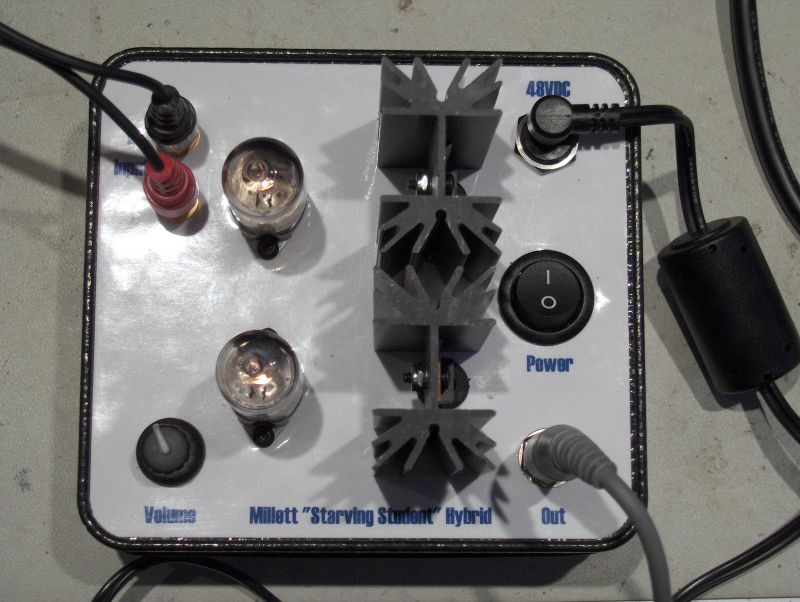
The "Starving Student" hybrid headphone amplifier
The "Starving Student" hybrid headphone amp is the result of my effort to design the simplest, cheapest tube hybrid headphone amplifier possible. Think "Millet hybrid" on a starving student budget.
For more info, examples, etc. please check out the Starving Student amp thread on Head-Fi.
Also, visit DIYForums for construction info and Beezar.com to buy parts and boards!
Also, check out the Starving Student photo gallery.
The result was surprisingly good!
The amplifier uses a pair of 19J6 tubes as a voltage amplifier stage - they're cheap, have high Gm, and the heater makes a perfect resistive load for a MOSFET source follower.
Say that again?
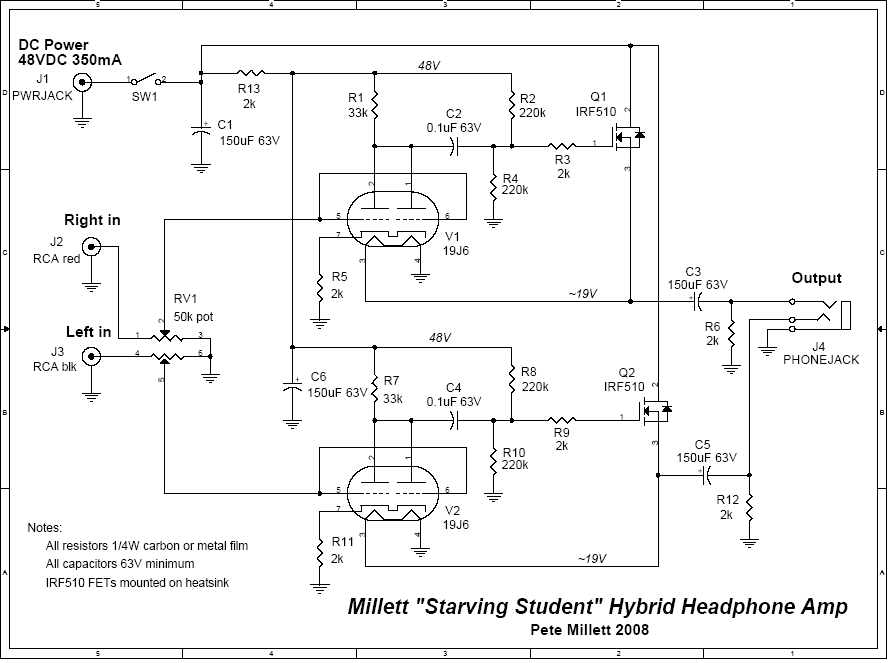 .
.
Yes, the tube heater is used as a resistive load for a power MOSFET source follower. The output is then capactively coupled from there. the 19J6 heater is rated at 18.9V and 150mA. 150mA is a nice healthy current to have running in the output stage - it will drive 32 ohm headphones with ease.
In case you're wondering, yes, it's OK to put audio on the tube heaters. Think about it - normally they run on 19V RMS AC. In this case they're running on 19V DC, with a little bit of audio superimposed (rarely more than 1V or so). There could (theoretically) be a little coupling from the filament to the cathode - the cathode resistor is un-bypassed - but it would be negative feedback, and the capacitance from heater to cathode is so low compared to the cathode resistor it would probably only be measurable at RF frequencies.
Here's a PDF file of the schematic.
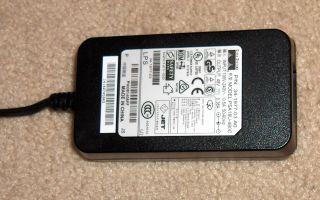 With
19V across the heater, a 48V power supply is about ideal. 48V also
provides enough voltage to get decent linearity from two paralleled 19J6 triode
sections, using a simple resistive plate load. And guess what - 48V power supplies
are dirt cheap! I used a 48V wall supply designed to power Ciso IP phones
and POE power injectors. They go for around $7.00 on eBay, and are very
common.
With
19V across the heater, a 48V power supply is about ideal. 48V also
provides enough voltage to get decent linearity from two paralleled 19J6 triode
sections, using a simple resistive plate load. And guess what - 48V power supplies
are dirt cheap! I used a 48V wall supply designed to power Ciso IP phones
and POE power injectors. They go for around $7.00 on eBay, and are very
common.
At power-up the supply struggles a bit to start up into the cold tube heaters, which draw a lot more current when cold. The power supply current limit cycles, but eventually dumps enough energy into the heaters to get them warm, and starts up.
Parts were selected so that there are as few items in the bill of materials as possible. No fancy parts, just normal, good quality R's and C's. The total cost of construction of this amp came in at $35.80 - to put it in "starving student" terms, about two delivery pizzas and drinks. This included everything except wire, solder, and the enclosure. In my case, the enclosure used was a recycled box that a wallet came in.
Here is the bill of materials in PDF or .XLS spreadsheet form.
This amp is simple enough for even a first-timer to construct point-to-point, with no PCB. You could build it in a normal chassis, but I chose to recycle a metal box I had sitting around that packaged a wallet I bought.
I used a piece of blank PCB material inside the box, partly to stiffen it (it's pretty thin metal), and partly to use as a ground plane. You can also wire this point-to-point without a ground plane. Nate Maher built a version this way:
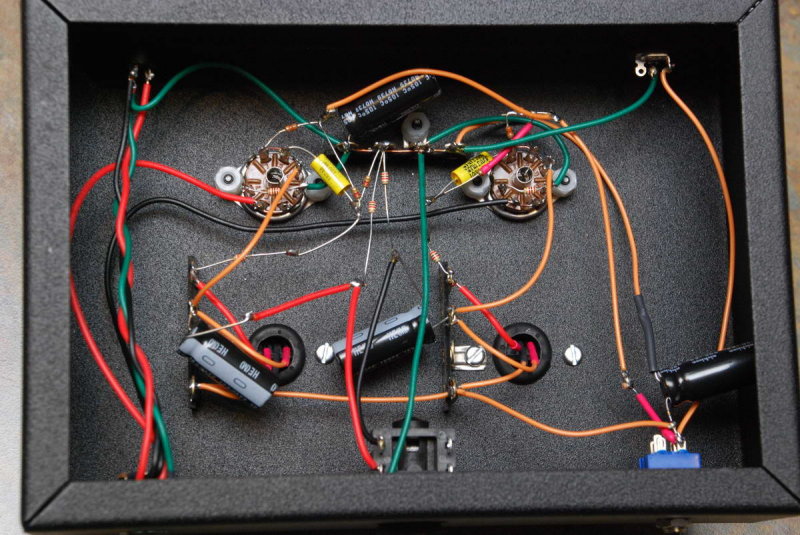
Here's an outside look at Nate's amp:
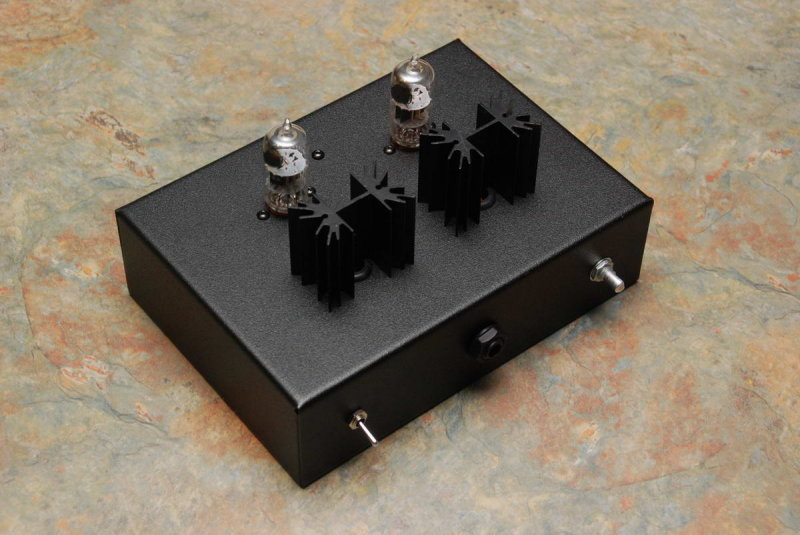
Very nice...
This is a fairly tubey sounding amplifier, similar in character to the original hybrid tube headphone amp design I published in audioXpress waaay back in 2002.
At 1V RMS out, THD is around 0.39%. Note that this figure is lower than the original Millett hybrid design. The FFT below shows that it's dominated by 2nd order harmonic, as expected, with everything beyond the 5th in the noise.
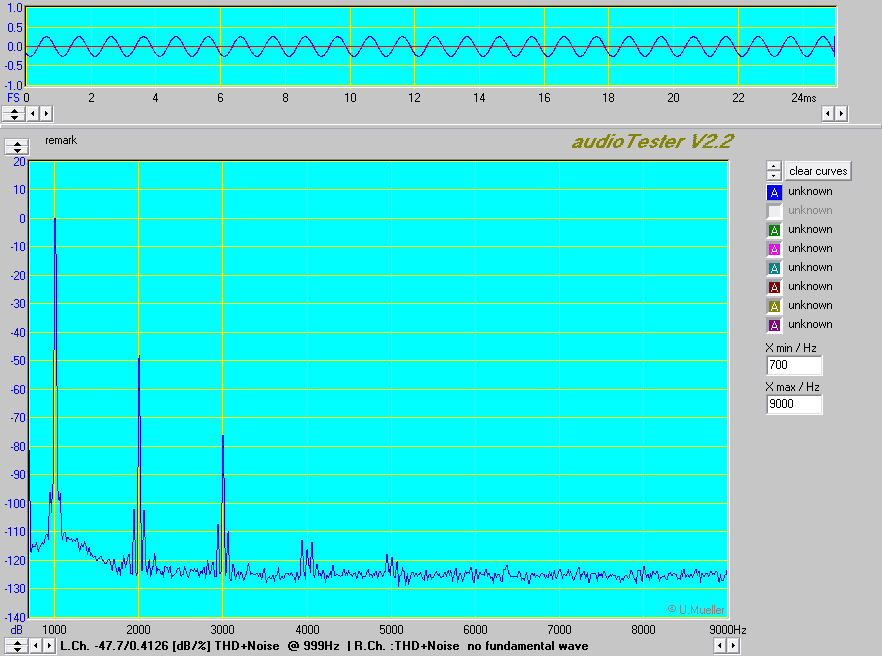
The 5% THD point is about 7V RMS into 100 ohms, or 3V into 32 ohms. If you've ever listened to 3V RMS into a pair of Grados... you've probably suffered long term hearing damage. For comparison, the Millett hybrid design clips at 2-3V RMS into pretty much any load.
The frequency response is quite flat, to the limits of my sound card. On the HP analyzer it measures about -2dB at 20Hz into 100 ohms, and -1dB at 100kHz. LF response at lower load impedances is limited by the size of the output cap. You can always make it bigger of you want.
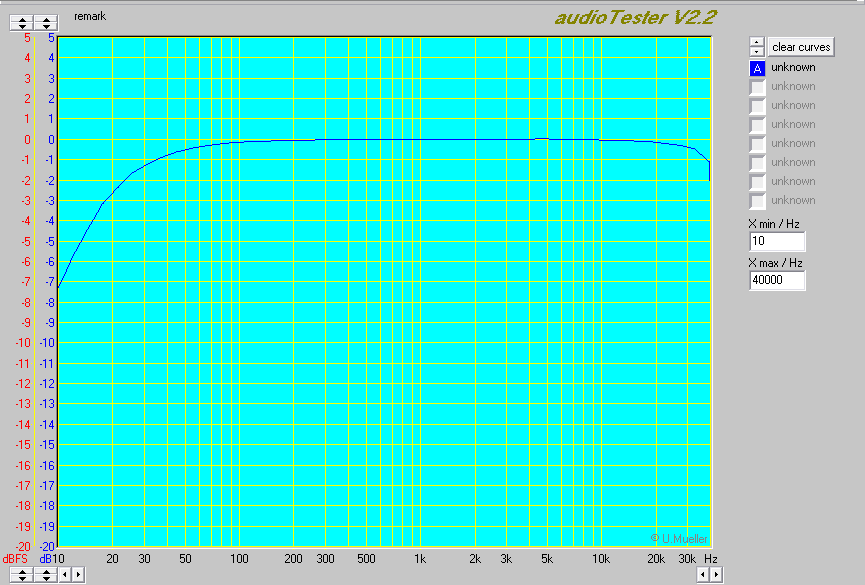
The AC output impedance is pretty low, measuring about 3 ohms.
This amp will drive pretty much any headphones. I've used it with Sennheiser HD600's, AKG K701's, and Grado SR225's - all sounded good.
Just for kicks, I hooked up my notoriously hard-to-drive K1000's to this amp. Wow, I'm surprised... it sounds pretty decent. Surprisingly dynamic. Actually, really good. Wow...
Try it - you'll like it! Simple is good!